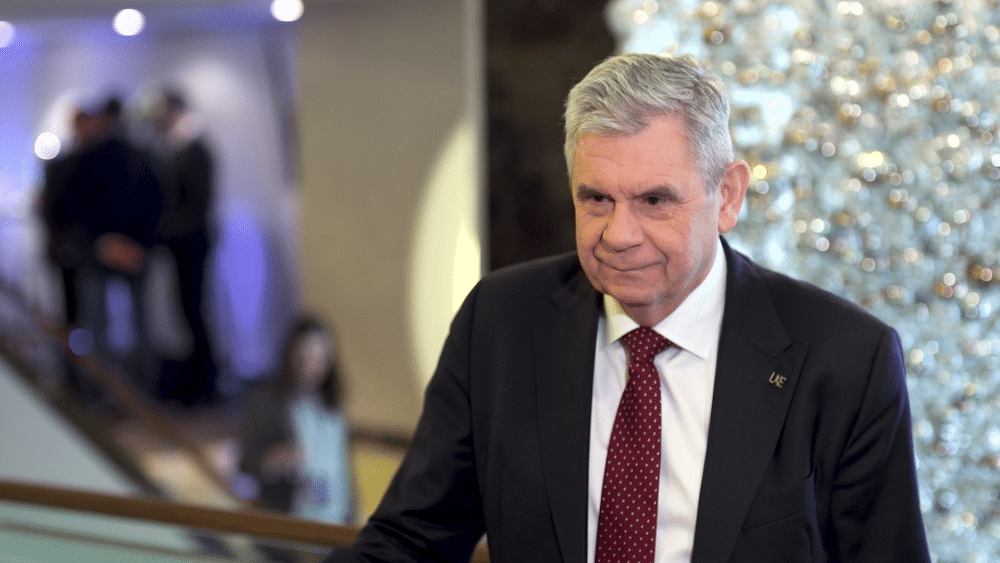“We are at 80-90% of the Digital Decade plan,” says Jacek Oko, President of the Office of Electronic Communications [UKE], admitting that Poland has certain delays, including in the mobile space. The European Union’s “Road to the Digital Decade” program is supposed to set the direction for Europe’s digital transformation by achieving specific goals and objectives by 2030.
One of the strategic documents supporting the development of the digital transformation at the infrastructure level is the National Broadband Plan. Its goal is to provide universal high-quality broadband internet access.
“When we talk about the National Broadband Plan, depending on its aspects, we are on the way, as this is still somewhat of a journey, to which we have to arrive. The plan itself is not one point, there are many elements to be implemented and what we are definitely increasing is the penetration of fiber-optic techniques in the telecommunications infrastructure. We are a bit behind,” says Jacek Oko to Newseria Business information agency.
The delays concern the mobile space, specifically the 3.4-3.8 GHz and 700 MHz bands. Another issue is the speed of implementing changes, which currently looks satisfactory.
“I believe that the pace over the past two-three years is so high that we can achieve the expected results,” says the head of UKE.
From the “Report on the State of the Digital Decade 2023 – Poland” published on the CyberPolicy NASK website, it appears that further action is needed in the area of digital infrastructure, despite the positive changes observed. In 2022, only 71% of households had a very high-capacity fixed-line network, while only 63% of them were within the 5G mobile network range. In this case, the average in the European Union is as high as 81%. It is worth noting that during the collection of these statistics, this network operated in frequency bands other than those prioritized for 5G.
“We have three areas: investment, i.e., operators, consumer area, i.e., users, and the government as a regulator and law creator. Each of these elements has its tasks and its roles in building a broadband system or broadband networks, maybe least of all the customer who is the recipient, but they also need to demand,” explains Oko.
In UKE’s opinion, we currently handle the redistribution of funds for the construction of a broadband network best. They are almost 100% on target.
“The COVID-19 did not favor certain solutions, it was a slowdown of the entire economy, we have inflation, we have labor shortages. It would seem, but what does it have to do with telecommunications? These fiber-optics need to be built, these are investments. The war behind our border also causes labor shortages, as it turns out, these are not dramatic situations yet, but already noticeable and they affect the pace,” the regulator emphasizes.
The technological industry also needs to define further goals. As in the days of LTE implementation, there was already talk of 5G, so now the industry is discussing the sixth generation of mobile telecommunications and private networks. Among the priorities is also the development of broadband internet through cable networks. However, the dynamism of development is crucial.
“We have accelerated the vehicle, this is perhaps the best definition. Now the main task will be to maintain it at high speed so that it does not start to slow down,” says Oko.
The Office of Electronic Communications [UKE] is not only a regulator but also plays an expert function. For example, UKE is looking for “white spots”, i.e., places where access to a modern network is difficult or impossible.
Jacek Oko acknowledges that the range of ways to increase demand for cheap, and basic services is broad.
The National CyberSecurity Institute’s “2023 Digital Decade Poland” report suggests the bulk of the funds in the National Recovery Program (KPO) for broadly understood digital issues are slated for connectivity. This is supposed to support the implementation of high-capacity networks, ie. fiber optics and 5G mobile networks. The total amount earmarked for network infrastructure is 1.4 billion euros for broadband fixed internet and 1.2 billion euros for high-speed data transmission in wireless technology.
Under the law, the President of the Office of Electronic Communications is the regulating authority in the areas of telecommunications, postal activity and, frequency resource management. It also oversees the market for products that emit or are susceptible to the emission of electromagnetic fields. Including, for example, radio devices introduced into commercial circulation in the territory of the Republic of Poland, eg phones, smartphones, walkie-talkies or other transceiver devices.
